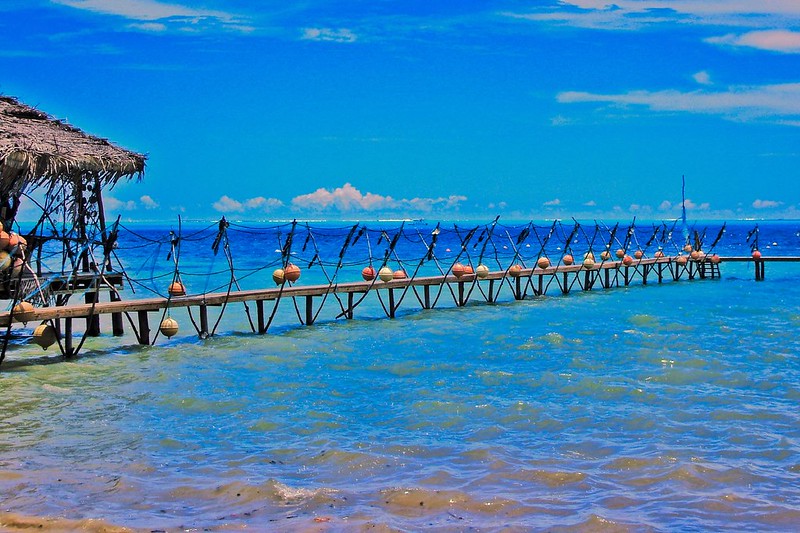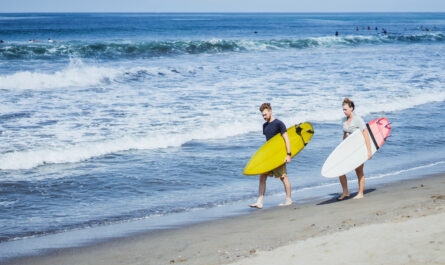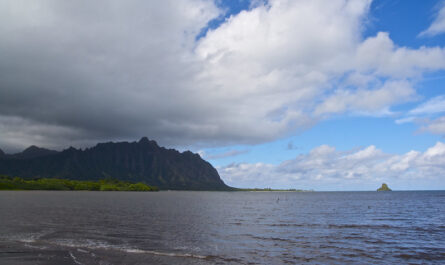Bora Bora, one of the most enchanting islands in French Polynesia, is known worldwide for its striking beauty, turquoise waters, and luxurious overwater bungalows. But beyond its iconic landscapes, Bora Bora’s true allure lies beneath the surface of its crystal-clear lagoons. Here, visitors are treated to a vibrant underwater world teeming with colorful fish, coral gardens, and fascinating marine species unique to this part of the Pacific.
The calm, shallow lagoons around Bora Bora make it one of the best destinations for snorkeling, diving, and close encounters with marine life. From the playful clownfish hiding among sea anemones to graceful manta rays gliding through the water, the lagoons offer a surreal experience for nature enthusiasts and adventure seekers alike. This guide will explore the wonders of Bora Bora’s marine life, the best spots to experience it, and how to enjoy this underwater paradise responsibly.
1. The Marine Ecosystem of Bora Bora’s Lagoons
Bora Bora’s lagoon is a natural aquarium, surrounded by a barrier reef that protects it from strong currents and waves. This creates a serene environment with calm, shallow waters that support a rich diversity of marine life. The lagoon is home to coral reefs, sandy floors, and seagrass beds that provide habitats and feeding grounds for a variety of species.
- Coral Reefs: Coral reefs are the cornerstone of Bora Bora’s marine ecosystem, providing shelter and sustenance for a multitude of species. These reefs are made up of hard and soft corals, with species like staghorn coral, brain coral, and fire coral forming intricate underwater structures.
- Seagrass Beds: Seagrass beds are important habitats for herbivorous fish and grazing species like sea turtles. These underwater meadows act as nurseries, providing young fish with a safe space to grow and mature.
- Sandy Floors and Patch Reefs: The sandy floors around Bora Bora’s lagoon are home to bottom-dwelling species like stingrays, which glide gracefully across the sand, blending in with their surroundings.
The diversity and health of these habitats are integral to the lagoon’s rich biodiversity, supporting everything from tiny invertebrates to large marine mammals.
2. Meet the Marine Life of Bora Bora
Bora Bora’s lagoon is brimming with fascinating marine species, making it a paradise for underwater exploration. Here are some of the key species you can encounter while snorkeling or diving in Bora Bora.
- Colorful Fish Species: The lagoon is home to a dazzling array of reef fish, including parrotfish, angelfish, butterflyfish, and triggerfish. The clownfish, often hiding among sea anemones, is one of the most beloved residents of Bora Bora’s reefs.
- Blacktip Reef Sharks: These small, non-aggressive sharks are a common sight in the lagoon. Blacktip reef sharks are known for their distinctive black-tipped fins and are harmless to humans, making them a thrilling encounter for snorkelers.
- Stingrays: Bora Bora is famous for its friendly stingrays, which glide effortlessly through the water. Stingray feeding excursions allow visitors to interact with these gentle creatures in a controlled environment, although it’s crucial to handle them with respect.
- Manta Rays: Manta rays are a highlight of Bora Bora’s marine life, known for their large size and graceful movements. These filter-feeders can often be seen near the reef’s edge, where they feed on plankton and perform breathtaking barrel rolls.
- Sea Turtles: Green and hawksbill turtles are commonly found in Bora Bora’s lagoon. These gentle creatures can often be spotted grazing on seagrass beds or swimming leisurely along the coral reefs.
- Moray Eels: Known for their snake-like bodies and distinctive jaws, moray eels are often found hiding among rocks and coral. Though intimidating, they are generally harmless to divers and are fascinating to observe.
- Octopus: Octopuses are masters of camouflage, blending into their surroundings and adapting their color and texture. They are elusive but occasionally spotted by lucky snorkelers or divers exploring the reef.
- Dolphins and Whales: While rarer within the lagoon, dolphins and whales can sometimes be spotted near Bora Bora’s outer reef, especially during the whale migration season from July to November.
3. Best Spots for Snorkeling and Diving in Bora Bora
Bora Bora’s lagoon is a dream for snorkelers and divers, with numerous spots offering diverse marine life and stunning coral formations. Here are some of the best places to explore.
- Coral Garden (Lagoonarium): The Coral Garden is an underwater oasis filled with vibrant coral structures and an abundance of fish species. This is one of the most popular snorkeling spots in Bora Bora, located between the main island and Motu Piti U’u Uta. The waters here are shallow and clear, making it ideal for beginners and families.
- Motu Tapu: Located just off the coast of Bora Bora, Motu Tapu is a private island with an impressive underwater landscape. Snorkeling around this island offers encounters with reef fish, rays, and occasional turtle sightings.
- Anau: Anau is a top spot for encountering manta rays, especially during the morning when these gentle giants come to the cleaning stations on the reef’s edge. This is a unique experience where divers can observe manta rays as they are groomed by cleaner fish.
- The Shark and Ray Feeding Spot: For those seeking an interactive experience, the Shark and Ray Feeding Spot is a thrilling location. Here, visitors can observe blacktip reef sharks and stingrays up close, guided by trained experts.
- Tupitipiti Point: This dive site, located at the edge of the lagoon, offers an incredible drop-off with caverns, vibrant corals, and the occasional visit from larger marine animals like barracudas and reef sharks. It’s more suitable for experienced divers due to the depth and occasional strong currents.
4. Conservation Efforts in Bora Bora
Bora Bora’s marine ecosystem faces threats from climate change, coral bleaching, and tourism-related damage. To protect this delicate ecosystem, conservation initiatives have been put in place, with efforts led by both government bodies and local organizations.
- Coral Reef Restoration: Coral reefs around Bora Bora are crucial habitats for marine life, but they are vulnerable to rising ocean temperatures and pollution. Several local initiatives focus on coral restoration, including coral planting projects and the establishment of coral nurseries.
- Marine Protected Areas (MPAs): Certain areas in Bora Bora’s lagoon are designated as Marine Protected Areas, limiting activities like fishing and coral harvesting to preserve biodiversity. These MPAs are essential for maintaining fish populations and ensuring the health of the coral ecosystem.
- Education and Awareness: Hotels and tour operators in Bora Bora often provide guests with information on how to explore the lagoon responsibly. Reef-safe sunscreen, no-touch policies, and guidelines on respectful marine encounters are some of the ways tourism contributes to conservation.
- Reef-Safe Sunscreen Initiatives: Sunscreen can be harmful to coral reefs, with chemicals that contribute to coral bleaching. Many resorts and shops in Bora Bora encourage the use of mineral-based, reef-safe sunscreens and provide them to guests.
5. Responsible Exploration: Tips for Eco-Friendly Snorkeling and Diving
To ensure that Bora Bora’s lagoon remains pristine, travelers must approach their marine explorations responsibly. Here are some essential tips to protect the marine ecosystem while enjoying its wonders.
- Use Reef-Safe Sunscreen: Choose mineral-based sunscreens that are free from harmful chemicals like oxybenzone and octinoxate, which damage coral reefs. Applying sunscreen before getting in the water and letting it absorb fully can also reduce its impact.
- Do Not Touch or Disturb Marine Life: It’s essential to keep a respectful distance from marine animals. Touching fish, coral, or any other marine organisms can disrupt their natural behavior and harm their habitats.
- Avoid Standing on Coral: Coral is delicate and takes years to grow. Avoid stepping or standing on coral reefs, as even slight pressure can damage the coral structures.
- Follow Instructions from Guides: Trained guides can enhance your experience by sharing insights about marine life and ensuring that you follow eco-friendly practices.
- Take Only Pictures, Leave Only Bubbles: Refrain from collecting shells, coral, or any other natural souvenirs. Respect the lagoon as a living ecosystem that needs to remain intact for future generations.
6. Additional Marine Experiences in Bora Bora
Bora Bora offers more than just snorkeling and diving; there are several unique experiences that allow visitors to connect deeply with the island’s marine ecosystem.
- Glass-Bottom Boat Tours: For those who prefer to stay dry, glass-bottom boat tours offer a glimpse of the vibrant underwater world. These tours provide a clear view of fish, corals, and rays without entering the water.
- Eco-Tours: Eco-tours are guided experiences focused on education and conservation. These tours often include reef-cleaning activities, coral restoration workshops, and talks on marine biology.
- Night Snorkeling: For the more adventurous, night snorkeling opens up a different world. As the sun sets, nocturnal marine life comes to life, and divers can witness the lagoon’s transformation under moonlight and flashlight.
- Underwater Photography Lessons: Bora Bora’s clear waters make it ideal for underwater photography. Some resorts offer photography lessons, helping guests capture stunning images of marine life while learning about respectful wildlife photography.
Conclusion: Dive Into Bora Bora’s Underwater Paradise
Exploring the marine life of Bora Bora’s lagoon is a breathtaking experience that connects travelers with the beauty and biodiversity of the Pacific. This underwater world, teeming with life and color, offers everything from vibrant fish to majestic manta rays and delicate coral gardens. By visiting Bora Bora responsibly, travelers can enjoy this paradise while supporting conservation efforts that ensure its protection for generations to come.
Whether you’re a seasoned diver, a first-time snorkeler, or someone simply fascinated by marine life, Bora Bora’s lagoon promises an unforgettable encounter with nature. With each dive or snorkel, the lagoon reveals new wonders, reminding us of the delicate balance and profound beauty of marine ecosystems.



